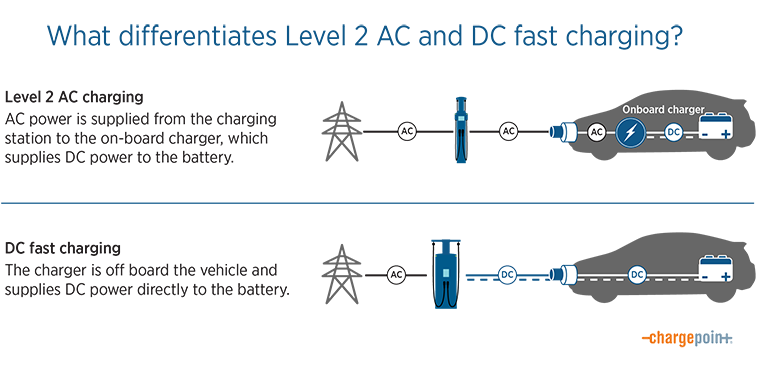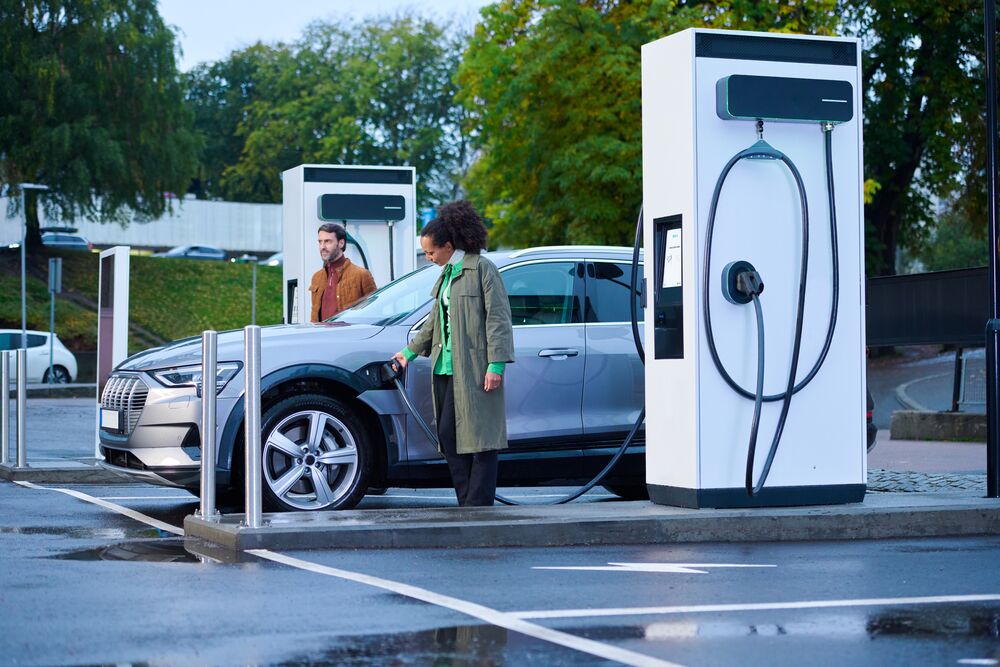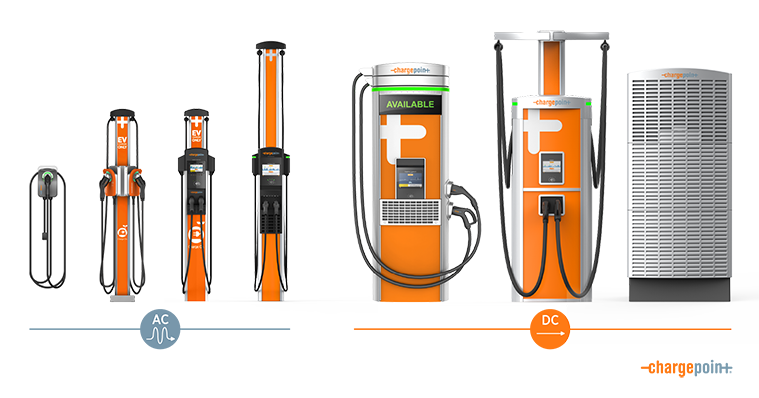Imagine being on a road trip, the open road stretching before you, and your electric vehicle running low on juice. The solution?
A DC fast charger. But here’s the catch: you need to know how to use it effectively to get back on the road swiftly. Whether you’re new to the world of electric vehicles or just looking to optimize your charging routine, mastering the art of using a DC fast charger is crucial.
In this guide, you’ll uncover the secrets to making the most of these powerful chargers. Discover how you can save time, extend your vehicle’s range, and ensure a smooth journey every time. Dive in and empower yourself with the knowledge to keep your adventures rolling without a hitch. Your EV charging experience is about to get a whole lot easier and more efficient. Let’s get started!
Understanding Dc Fast Charging
Understanding DC Fast Charging is essential for electric vehicle owners. It enables quicker charging compared to standard options. This charging method delivers high power directly to the battery. It’s ideal for those needing fast energy boosts on the go. Knowing how it works can help maximize convenience and efficiency.
What Is Dc Fast Charging?
DC Fast Charging supplies direct current to the battery. It bypasses the vehicle’s onboard charger. This allows for faster charging times. The system uses a high-power charging station. These stations are found at public charging locations. They are especially common on highways and in urban areas.
One major benefit is the reduced charging time. A typical session can take 30 minutes or less. This makes it suitable for long trips. It also reduces waiting times at charging stations. Fast charging can add significant range quickly. It is a convenient option for busy schedules.
How To Use A Dc Fast Charger
First, locate a compatible charging station. Many apps can help with this. Once at the station, park and turn off the vehicle. Next, plug the charger into the car’s charging port. Follow any on-screen instructions at the station. After charging, unplug and store the cable properly.
Compatibility And Costs
Not all vehicles support DC Fast Charging. Check your car’s specifications first. Also, consider the cost of using these stations. Prices vary by location and provider. Some networks offer subscription plans. These can lower the overall cost of charging.

Credit: www.chargepoint.com
Benefits Of Dc Fast Charging
DC fast charging offers numerous benefits to electric vehicle (EV) users. It allows for a quick, efficient energy boost, reducing downtime. This convenience makes it an attractive option for those on the go. Explore the advantages of using DC fast chargers.
Speed Of Charging
DC fast chargers significantly reduce charging time. While traditional chargers take hours, DC fast chargers can charge a battery in minutes. This rapid charging helps users get back on the road quickly.
Convenience For Long Journeys
Planning a long road trip? DC fast chargers make travel easier. They are strategically placed at key locations, offering easy access. Charging stops become brief, ensuring uninterrupted journeys.
Extended Battery Life
Using DC fast chargers can help maintain battery health. They offer controlled energy delivery, which is gentle on batteries. This can prolong battery life, ensuring better performance over time.
Availability And Accessibility
DC fast chargers are widely available. Many cities and highways now have charging stations. This availability increases accessibility, making EV charging more convenient for everyone.
Reduced Environmental Impact
DC fast charging supports the shift to green energy. It encourages more people to use electric vehicles. This transition helps reduce carbon emissions, benefiting the environment.
Cost Efficiency
Over time, DC fast charging can be cost-effective. Efficient energy use can lead to savings. Less time spent charging means more time driving, reducing overall costs.
Locating A Dc Fast Charger
Finding a DC fast charger is easy with mobile apps. These apps show nearby charging stations quickly. Users can check the availability and speed of chargers before heading out.
Locating a DC Fast Charger is crucial for electric vehicle (EV) owners. DC Fast Chargers provide swift charging, reducing wait times. Finding them can enhance your travel experience. This section explores methods to locate these chargers efficiently.Using Charging Apps
Charging apps are valuable tools for EV owners. They help you find nearby chargers quickly. Most apps show real-time charger availability. Some apps even provide pricing details. Using these apps can save time and effort. Popular apps include PlugShare and ChargePoint. They offer user reviews and photos. This can help you choose the best charger for your needs.Public Charging Networks
Public Charging Networks offer widespread access to chargers. Networks like Tesla Supercharger and Electrify America are popular. They are strategically located along major routes. These networks ensure you are never far from a charger. Membership in a network can provide additional benefits. Some networks offer discounted rates or priority access. Public networks also offer reliable charging solutions. They are maintained regularly for optimal performance.Preparing Your Vehicle
Charging your electric car with a DC fast charger is easy and quick. First, locate a compatible charging station. Then, connect the charger to your vehicle’s port. Wait for the charging process to complete. It’s a straightforward way to power up your car for long trips.
Preparing your vehicle for a DC fast charger ensures a smooth charging experience. This step is crucial for efficient energy transfer. Proper preparation helps avoid potential issues. You want to optimize charging time.Checking Compatibility
Before charging, confirm your vehicle’s compatibility with the DC fast charger. Different chargers suit different electric cars. Check your car’s manual for compatibility information. Ensure the charger matches your car’s connector type. Compatible chargers provide faster and safer charging.Battery State Of Charge
Monitor your battery’s state of charge before using the DC fast charger. The battery’s current charge level affects charging speed. Lower charge levels often result in faster charging. Charging slows as the battery approaches full capacity. Understanding this helps plan charging sessions efficiently.Connecting To The Charger
Connecting to the charger is the first step in using a DC fast charger. This process is crucial for a successful charging session. Follow these simple steps to ensure your electric vehicle charges efficiently.
Plugging In
Begin by locating the charging port on your vehicle. Open the port cover carefully to avoid damage. Next, take the connector from the charger. Align it with your vehicle’s port. Insert the connector firmly until it clicks into place. This ensures a secure connection.
Starting The Charging Process
Once plugged in, check the charger screen for instructions. You may need to select charging options. Some chargers require a payment method before starting. Follow the prompts on the screen. Confirm your choices to start charging. Your vehicle should now begin charging. Monitor the progress via the display or your car’s app.
Monitoring The Charging Session
Using a DC fast charger is efficient. Monitoring the charging session is crucial. It ensures your vehicle charges safely and effectively. Knowing what to watch for helps you make informed decisions. Two key aspects to monitor are charging speed indicators and estimated time remaining.
Charging Speed Indicators
Most DC fast chargers display charging speed. This shows how fast your car is charging. Check the display on the charger or your car’s dashboard. A high kilowatt (kW) number means faster charging. Charging speed may vary. Factors include battery level and charger capacity. Monitoring these indicators helps optimize your charging experience.
Estimated Time Remaining
Estimated time remaining is another important detail. It tells you how long charging will take. This information is shown on the charger’s screen. Your car’s display might show it too. Knowing this helps plan your time efficiently. You can decide to wait or return later based on this estimate.
Ending The Charging Session
Stopping the charging session with a DC fast charger is simple. Press the stop button on the charger screen. Disconnect the charging cable from your vehicle.
Ending a charging session is as important as starting one, especially when using a DC fast charger. You want to ensure that the process is smooth, safe, and efficient. It’s easy to overlook the ending steps, but they can make a big difference in your charging experience. Imagine being in a hurry and needing to wrap up quickly; knowing how to end the session properly can save you time and trouble.Unplugging Safely
Safety first! When you’re ready to stop charging, make sure to unplug the cable correctly. This isn’t just about pulling it out. Check if the charging station has a specific button or lever for disengaging the connector. Many chargers have mechanisms to ensure you don’t accidentally damage the plug or your vehicle’s port. Think about those moments when you’ve tried to pull out a plug and it just wouldn’t budge. Using the right technique can prevent wear and tear.Payment And Billing
Once the charging session ends, it’s time to handle the payment. Did you know that some stations automatically process your payment as soon as you unplug? Others might require you to confirm the transaction manually. Keep an eye on the screen or app for instructions. Ensure your payment details are updated. This can prevent unexpected billing issues. Imagine realizing your card expired and you’re stuck at the station. Also, check for any extra fees or time-based charges. Knowing these details helps you manage your budget better. Ending your charging session efficiently can make your day smoother. What steps do you usually overlook when finishing up?
Credit: blog.evbox.com
Troubleshooting Common Issues
Charging your electric vehicle (EV) using a DC fast charger can be a breeze. However, like any technology, there can be bumps along the road. Troubleshooting common issues with DC fast chargers ensures your journey remains smooth. Whether it’s connection problems or slow charging speeds, understanding these issues can save you time and frustration.
Connection Problems
Have you ever plugged in your EV and nothing happens? Connection problems are more common than you might think. Check if the charging cable is securely attached to both your vehicle and the charger. Sometimes a simple reconnection can solve the issue.
Ensure your EV’s software is up to date. Outdated software can sometimes cause compatibility issues. If your charger has a screen, look for any error messages that might indicate what’s wrong.
Think about the weather conditions. Extreme cold or heat can affect the connection. A personal tip: try warming the connectors with your hands in cold weather to ensure a better fit.
Slow Charging Speeds
Ever watched the charging percentage creep up like a snail? Slow charging speeds can be frustrating. First, check if your battery is already partially charged. Charging slows down as the battery approaches full capacity.
Look at the charger’s output power. Not all DC fast chargers deliver the same speed. Some may be limited due to local infrastructure or network settings. If you’re in a hurry, find a charger with higher output.
Consider the state of your battery. Batteries in a low state of charge or cold conditions might charge slower. Think about the last time you charged your EV: was it parked outdoors in chilly weather?
In troubleshooting, curiosity is key. Ask yourself: What could be the missing link in the charging process? By exploring these potential issues, you can transform a charging hiccup into a learning opportunity. Happy charging!
Maximizing Efficiency
Using a DC fast charger efficiently saves time and energy. Start by connecting the charging cable to your vehicle’s port. Monitor the charging status on the screen to ensure optimal performance and battery health.
Maximizing efficiency while using a DC fast charger is crucial for getting the most out of your electric vehicle (EV). It’s not just about plugging in and waiting; there’s a strategy involved that can save you time and keep your battery healthy. By understanding optimal charging times and maintaining good battery health, you can enhance your EV experience significantly.Optimal Charging Times
Knowing when to charge your EV can make a big difference. Charging during off-peak hours can be both cost-effective and faster. Many utility companies offer lower rates at night, so charging late can save you money. Monitor your battery’s state of charge. Aim to charge when your battery is between 20% and 80% for the best efficiency. This range helps avoid stress on the battery, which can extend its lifespan. Take advantage of public charging stations with high power outputs if you’re in a hurry. They can provide a quick boost when you need it most, cutting down your wait time considerably.Battery Health Tips
Maintaining your battery’s health is key to maximizing efficiency. Avoid letting your battery drop too low frequently. Keeping it above 20% can prevent long-term damage. Try not to charge to 100% regularly. Stopping at 80% is generally better for the battery’s longevity. It might seem counterintuitive, but charging fully every time can wear out your battery faster. Keep an eye on the temperature. Extreme heat or cold can affect charging speed and battery health. Charging in a temperate environment is ideal, so consider the weather when planning your charging. Have you ever noticed your phone battery deteriorating over time? EV batteries are similar but require more care due to their size and complexity. Applying these tips can help maintain performance and efficiency, keeping your EV running smoothly for years to come. Are you ready to rethink how you charge your EV? Implementing these strategies can make a noticeable difference in your charging routine and battery life.
Credit: www.chargepoint.com
Conclusion
Using a DC fast charger is straightforward and convenient. It saves time and keeps your electric vehicle ready for the road. Just plug in, follow instructions, and wait. Check your car’s manual for specific guidance. Always ensure the charger matches your vehicle’s needs.
Keep an eye on charging status to avoid overcharging. Pay attention to safety features and signals. Enjoy the ease of quick charging at public stations. It’s a simple solution for busy lifestyles. Feel more confident in managing your electric vehicle’s battery life.
Happy charging! Stay energized on your journeys.
